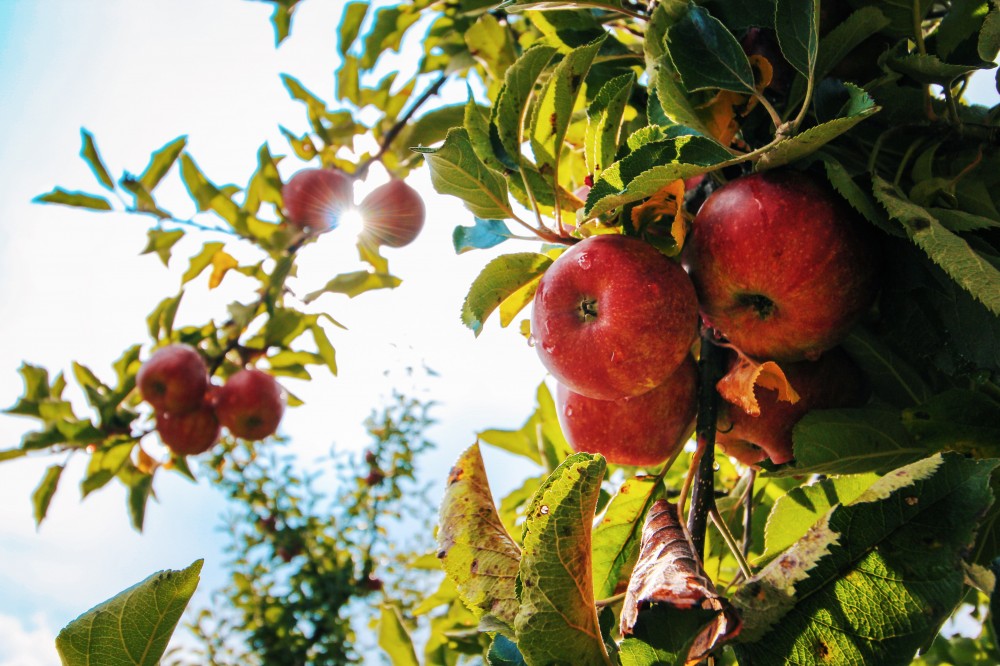Exploring the Language of Cider
With the arrival of Spring and the expectation that the sun will shine, we have refreshed our cider selection. We are delighted with the arrival of an exciting new range of ciders from a selection of fantastic craft cider producers. To help guide you through our new selection of ciders, our resident cider enthusiast, Ed, has put together a glossary of cider terminology.

Bittersharp – Apples that are both high in tannins and high in acidity. These apples can be used to create well balanced vintage ciders that are capable of ageing without blending in any other type of cider apple. Examples of bittersharp apples include Kingston Black, Foxwhelp and Red Stoker.
Bittersweet – Apples that are low in acidity and high in tannins. These apples are often blended with those that have a higher level of acidity to help produce a more balanced flavour profile. Examples of bittersweet apples include Dabinett, Harry Master’s Jersey and Yarlington Mills.
Bottle-fermented – In the wine world this is known as Methode Traditionelle, or the Champagne Method. There is evidence to suggest that English cider makers pioneered this method of making sparkling alcoholic beverages.
Chaptalisation – Adding sugar to the fermented cider to increase the ABV so that it will last longer and can then be watered down to its desired ABV. An example of a producer who does this is Westons.
Cidre – French Cider or at least French-inspired cider.
Co-fermentation – Fermenting a range of different cider apple varieties together in the same tank rather than blending the varieties together after they have been fermented. Some producers co-ferment other types of fruit, such as raspberries or quince, or even add honey to their fermentation.
Concentrate – Many of the larger cider producers, such as Bulmers and Strongbow, use apple concentrate rather than fresh apple juice to create their ciders as it will last longer and be more consistent to produce, rather than the more artisanal methods used by many smaller cider makers.
‘Crossover’ Apples – These apples have found favour with cider makers for use in blends but do not fall into the traditional Bittersharp, Bittersweet, Sharp or Sweet categories. Examples of ‘Crossover’ apples include Baldwin, Golden Russet and Northern Spy.
Cryo-conditioned – Made using fruit that was frozen to reduce the volume of water in the fruit and increase the volume of fermentable sugars. Similar to Ice Wine and utterly delicious though often sweeter in style.
Dryness/sweetness – Cider comes in a broad range of sweetness from bone dry to lusciously sweet. The categorisation goes from the least to most residual sugar as follows; Dry, Medium-Dry, Medium, Medium-Sweet and Sweet. Most ciders are made on the drier end of the scale, especially if they do not declare a specific style on the bottle. Ciders with less than about 4% are likely to be sweet whilst those above 7% are likely to be very dry but this is a general guide rather than a hard and fast rule.
Ice Cider – See Cryo Conditioned.
Keeved – Keeved ciders are fermented very slowly at low temperatures to craft more complex flavours. This is a complex process that is difficult to achieve but delivers fantastic results, often at a lower ABV than more conventionally made ciders.
Perry – Cider made using pears instead of apples. Traditionally English Perrys are made dry whilst French Perrys are made sweet and sparkling. Examples of Perry Pears include Gelbmostler, Normanischen and Yellow Huffcap.
Pure Juice – Ciders that have been made only from pure fruit juice, with no additional ingredients.
Scrumpy – A West Country term for unfiltered, cloudy cider.
Single Variety – Ciders made using just one variety of apple as opposed to blending different varieties together. A classic example of this is the Kingston Black variety, which is seen by many as ideal for making this style of cider.
Sharp – Apples that are low in tannins and high in acidity. These are often blended with Bittersweet varieties to help produce a more balanced cider that tastes refreshingly good. Examples of Sharp apples include Bramleys Seedling, Harrison and Wickson Crab
Styles – Ciders comes in a wide variety of styles from still to sparkling, keeved ciders, ice ciders, scrumpy, vintage cider, fruit cider and perry.
Sweet - Apples that are not high in either tannin or acidity. These are usually used as an additional source of sugar for the yeast to ferment or to help change the flavour profile of the cider. Examples of Sweet apples include Belle de Boskoop, Novaspy, and St. Edmund’s Russet.
Wassail: A warm mulled cider that is cooked with spices. Essentially mulled wine but made with cider!

